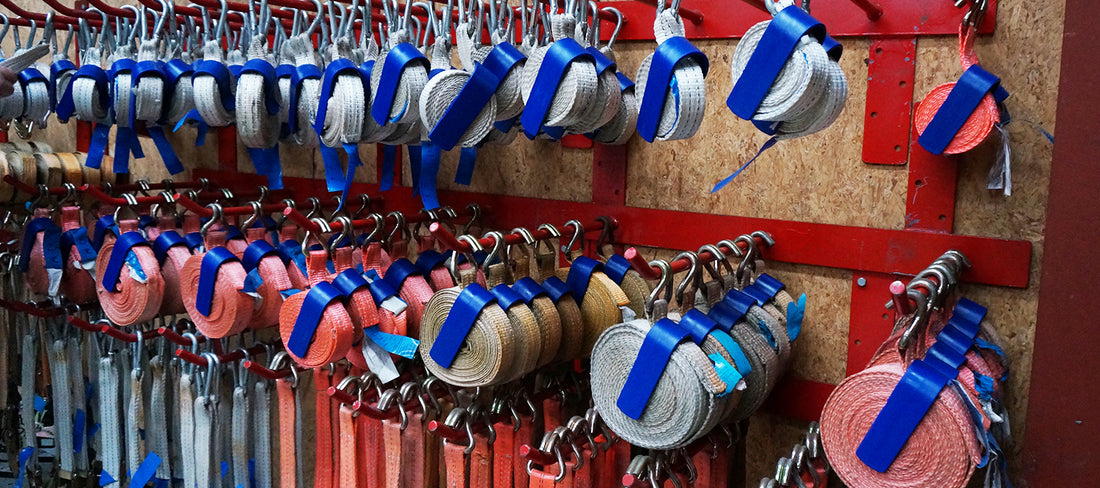It is first of all important to know why good ratchet strap storage is crucial.
Lashing straps are typically made of polyester, which is a well-known polymer also used in clothing. The material is used for webbing due to its high tenacity (strength-to-weight ratio) which have one giant advantage: less weight to throw over the load.
MATERIAL DEGRADATION
Degradation of the polyester can happen in many ways usually exposure to excessive sun (UV rays) and heat, wear and tear from sharp edges or storage in moist and wet boxes.
It is usually easy to see when your ratchet strap is out of date (tears in webbing) and a good rule of thumb is to check your ratchet straps whenever you use them and/or roll-up them up for storage. A strap that is not stored properly and taken care of will degrade in the polyester.
A degradation of the material will eventually lead to lower break strength of the lashing strap and in worst case cause accidents, when it should prevent accidents.
READY TO USE
Another thing about storage is that your ratchet straps will always be ready to use.
This will save you enormously amounts of time!
Nobody wants to start their load-securing by untangling the straps, especially if it is bad weather.
MANY SOLUTIONS EXIST
There exists many ways to store your straps or to be more specific, ways to avoid the strap unwinding.
Among other solutions are velcro bands, rubber bands, old socks, winding excess strap around ratchet, a special made box and so on. What is common about these ideas is that they are meant for small ratchet straps and not 5-tonne ratchet straps.
A good solution should be simple, quick to do and sustainable. Old socks and rubber won't last forever.
Guide: How to store ratchet straps
-
Let the webbing dry
The webbing should be as dry as possible before storage. If possible, let the webbing ventilate in the trailer before rolling them up. -
Roll-up the straps
If you do not have the time to leave them drying, you can roll the strap up immediately. Your webbing should always be rolled up to:- save space,
- avoid tangled straps,
- easy to use next time.
-
Inspect for defects
While rolling up your straps, you should always inspect them for defects such as tears. -
Prevent unwinding
You want to avoid the strap unwinding again and get tangled with the other straps. For this, we recommend our strap clamps. Apply the strap clamp onto every strap close to the metal hook, which will prevent it from tangling. -
Dry and ventilated storage
Lastly, the place where you keep your straps should be dry and ventilated so the moist can evaporate quickly. Avoid tightly closed boxes as it will keep the moist in. Also keep the straps out of direct sunlight. The same goes for the ratchets to avoid corrosion. -
Tip for drying your straps!
Unwind a half meter of strap and apply the strap clamp. Now hang the strap inside your trailer and let the air ventilate out the moist of the lashing strap.
Benefits of strap clamps
DYNELLO® Clip strap clamp has for many years proved to be one of the best solutions when it comes to storage of 5-tonne (50mm/2in wide webbing) lashing straps.
-
Easy to apply
Keep your workgloves on. Attachment of the strap clamp can be done quickly and fits your wet, oil-greased and dirty lashing straps. -
Sustainable
Lasts longer than cable ties, velcro, rubber bands and so forth. -
Demands minimum space
The strap clamp requires no extra space unlike custom-made storage boxes. -
Very cost-friendly
The price of the strap clamp is none to less compared to many other one-time-use solutions and custom-made storage boxes.

